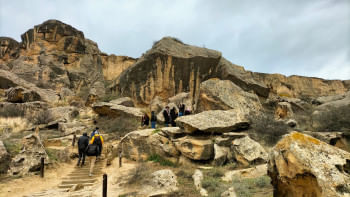Let’s begin a discourse of resistance against forest fires

There is no singular definition of a forest. The process of defining and identifying forest areas is inherently tied to the politics of power and authority. The state, the forest department, multilateral banks, donor agencies, corporations, and forest-dependent communities all perceive forests differently and define their relationship with them in distinct ways. However, institutionally, a forest is defined as a collection of numerous trees, their species, and wildlife. According to The United Nations Convention on Biological Diversity (CBD), forest biodiversity refers to the assemblage and relationships of all trees, animals, and microorganisms within a forest, as well as their ecological processes and functions.
Although Bangladesh has a relatively small land area, its forests are remarkably diverse. They include mangroves, coastal swamp forests, deciduous sal forests, hill evergreen mixed forests, rainforests, swamp forests, reed forests, rural forests, and sacred groves. According to numerous indigenous narratives worldwide, civilisation itself was born from the forest. While countless species, including humans, depend on forests for food, shelter, medicine, and survival, the neoliberal system continuously disregards these contributions. The unilateral commercialisation, exploitation, and occupation of forests began with the shipbuilding, timber, and pharmaceutical industries. To sustain profit-driven commerce, various colonial controls were imposed on forests in Bangladesh and across Asia.
Bangladesh's forests and genetic resources are continuously subjected to distress and threats. Already, rural forests, sacred groves, swamp forests, and reed forests across the country have been ruthlessly destroyed. Over the past 20 to 25 years, an unchecked trend has emerged, with forests being deliberately set on fire. Although natural forest fires do not occur in Bangladesh, large swathes of forestland and rare genetic resources are lost every year due to "planned arson." The state has yet to take a strong stance or systematic action against forest fires. There is still no ecosystem-based policy, planning, or management framework to address this issue. Environmental organisations, political parties, and citizens remain largely silent on the issue of forest fires. Such neglect and indifference allow the country's "lungs" to burn without question. Each year, acts of ecocide occur without accountability. Every year, March 21 is observed as International Day of Forests. This year's theme is "Forests and Food." This article seeks to remind us of the unbearable suffering caused by forest fires in Bangladesh and calls for justice for the forests.
The Lawachara wildfire incident
The largest wildfire in the history of Bangladesh's natural forests occurred on June 14, 1997. This devastating ecocide was triggered by a gas exploration survey conducted by the American company Occidental Petroleum Corporation. The flames consumed vast areas of Moulvibazar's Sreemangal-Kamalganj region, including Magurchhara and Lawachara. In 1996, a 1,250-hectare portion of the 2,740-hectare West Bhanugach Reserved Forest was declared the Lawachara National Park. Lawachara is home to 460 species, including 167 species of plants, four amphibians, six reptiles, 246 birds, 20 orchids, 20 mammals, and 17 species of insects. Since the 1997 ecocide went unpunished, many forest grabbers across the country, including in Lawachara, became emboldened to grab forestland by setting fires. This rainforest is one of the primary habitats of the hoolock gibbon. However, multinational mining operations, American projects, railway and road construction through the forest, corporate hotels and resort businesses have collectively pushed this forest to the brink of collapse. On April 24, 2021, while implementing a forest department initiative, a fire broke out in a section of Lawachara, resulting in extensive damage. In 2023 as well, a fire was deliberately set in Lawachara. On February 26, 2025, nearly two acres of forest were set ablaze in broad daylight.
The Bhawal Sal Forest fires
In 1886, Frank B Simson in the book Letters on Sports in Eastern Bengal described hunting adventures in the Bhawal Sal Forest. Spanning nearly 65,000 acres in Gazipur, the Bhawal Sal Forest today is frail, shrinking, and plagued by encroachment and pollution. The last recorded sighting of a tiger in the Bhawal Sal Forest dates back to 1940. After Bhawal was declared a national park in 1973, it became home to 220 species of plants, 13 species of mammals, nine reptiles, five amphibians, and five species of birds. Every winter, the Bashtoil Sal forest near Bhawal is deliberately set on fire. The land of the burnt forest is then repurposed for housing, hotels, factories, and other construction. Just before the International Day of Forest in 2023, large areas of the Sal forest in the Goshinga-Patka region of Sreepur, Gazipur, were reduced to ashes by fire. Similar incidents of arson occurred in March of both 2022 and 2021. In 2023, a fire also devastated the Sakhipur Sal forest.
The Rangtia Sal Forest fire
Rangtia, located in Jhenaigati upazila of Sherpur, is one of the country's significant sal forests along the border. One of its distinctive features is the presence of various types of flax. This forest is home to approximately 250 species of plants. Ten rare and distinct species of medicinal plants whose roots are traditionally used as medicines grow in this forest. With the dominance of the neoliberal market, Rangtia eventually transformed into a site for China clay and stone mining. Streams, hills, and forests were ravaged in the pursuit of stone trade. The Rangtia Sal Forest houses many sacred trees, holy sites, and groves. However, most of them have been encroached upon. At the beginning of this month, a wildfire raged through Rangtia for an entire week.
The Madhupur Sal Forest fires
Madhupur has stood as a prime example of the various forms of oppression and exploitation that can be inflicted upon a forest. In 1950, jhum cultivation was forcibly banned in the Madhupur sal forest area. In 1955, the name of the forest was changed to "Woodlot Garden." 1962, it was declared a national park, and barbed wire fences were erected. From 1989 onwards, invasive trees and rubber gardens replaced the natural forest. Commercial pineapple and banana plantations were later established. The forest department planned to implement an eco-park project in the sal forest, enclosing it with a 61,000-foot-long wall. Meanwhile, Bangalee settlers began to occupy forest lands. Since 2000, various parts of the Madhupur Sal Forest have been set on fire every year to clear the land, which is later used for cultivation.
The Sundarbans fire incidents
According to forest-dependent communities, local residents, the forest department, and media reports, the Sundarbans have experienced nearly25 fire incidents between 2002 and 2024. Approximately 72 acres of forest have been directly burned. On March 22, 2002, a fire broke out in the Katka Wildlife Sanctuary in the Sharankhola range of Bagerhat. On March 25, 2004, a fire destroyed three acres of forest in the Chandpai Range. On December 27, 2004, nine decimals of forestland were burned in the Aruarber area. In the past two decades, many such fires ravaged this forest.
Whenever fire incidents occur in the Sundarbans, we see the forest department making irresponsible statements in the media. When a fire burns parts of a forest, the damage is assessed in a one-dimensional manner, focusing only on the area burned and the volume of timber lost. When a complex ecosystem like the Sundarbans is scorched, can its damage truly be measured merely by cubic feet of lost timber or land area affected? A natural forest is certainly not a timber plantation, a decorative botanical garden, or a zoo.
The Rema-Kalenga Wildlife Sanctuary fires
After the Sundarbans, Rema-Kalenga in Habiganj is the largest natural forest in Bangladesh. It was declared a wildlife sanctuary in 1982. In 2023, the authorities of the Hatimara Tea Estate set fire to the forest land they took a lease of intending to expand their tea plantation. They also cut down nearly 140 ancient trees altering the classification of the land.
The fire burned down large portions of the Rema-Kalenga Wildlife Sanctuary, killing many wild animals.
Building a discourse of resistance against forest fires
According to Bangladesh's existing forest laws, environmental laws, and the Wildlife (Conservation and Security) Act 2012, setting fire to natural forests is a punishable offence. Yet, we have never heard of any exemplary trials or punishments. Despite signing the United Nations Convention on Biological Diversity and the Paris Climate Agreement, the state has failed to prevent fires in natural forests. Although the Tree Conservation Act 2016 was drafted, it has yet to be approved. In 2021, Bangladesh signed the Glasgow Leaders' Declaration on Forests and Land Use to end global deforestation yet the state remains unaware of the extent of forest and tree loss due to fires. Although Article 18(A) of the Constitution declares the protection of forests and genetic resources as a state responsibility, we are yet to see effective measures to safeguard forests from fires.
Natural forests do not catch fire spontaneously; such incidents are often caused intentionally. Firstly, the forest department and state authorities must recognise and address this issue. Negligence is unacceptable—each incident of fire must be responsibly addressed. Every fire should be investigated, and those responsible must be brought under the law. Following a fire, the forest department should organise visits involving all relevant stakeholders. Based on the input from the community and others, a forest management plan can be developed. Immediate efforts must be made to extinguish the fire during such incidents, with active involvement from the community. Assessing the damage should prioritise the natural and cultural aspects of the forest.
To establish short, medium, and long-term forest management, the forest department and related authorities must cultivate a culture of public dialogue about the country's forests, ensuring that the opinions and suggestions of citizens from all classes, professions, genders, and ethnic groups are understood and considered. The commercial narratives about forests must change. The traditional knowledge and forest management practices of forest dwellers, forest-dependent communities, and indigenous peoples are now universally recognised. Their vision and expertise must be regarded as the core strength of the state's forest management. Let a new public discourse emerge to protect natural forests, rooted in the knowledge and narratives of the people, involving everyone.
Pavel Partha, an ecology and biodiversity conservation researcher, is director at Bangladesh Resource Centre for Indigenous Knowledge (BARCIK). He can be reached at [email protected].
Views expressed in this article are the author's own.
Follow The Daily Star Opinion on Facebook for the latest opinions, commentaries and analyses by experts and professionals. To contribute your article or letter to The Daily Star Opinion, see our guidelines for submission.

 For all latest news, follow The Daily Star's Google News channel.
For all latest news, follow The Daily Star's Google News channel. 






Comments